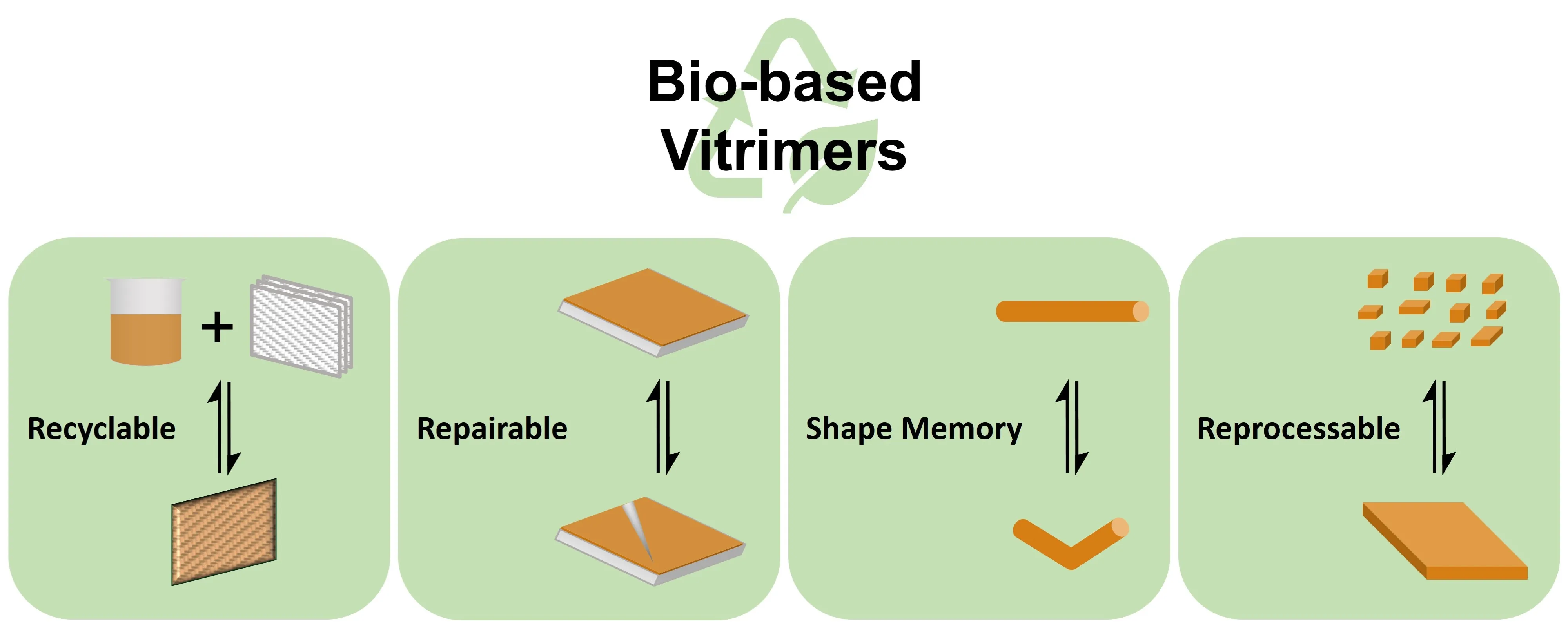Found 2 results
Open Access
Review
14 June 2024Biobased Vitrimers: A Sustainable Future
Vitrimers are crosslinked polymers containing dynamic covalent linkages. Because of their crosslinked structure, they are stable as thermosets at their service temperatures. At high enough temperatures, dynamic exchange reactions occur and rearrange the polymer network, thus vitrimers become malleable and reprocessable like thermoplastics. The dynamic covalent bonds can also undergo dissociative cleavage reactions under specific conditions, so vitrimers are inherently degradable. To achieve a sustainable future, various biomass resources have been used as raw materials in vitrimer preparation. This review summarizes recent developments in biobased vitrimers and highlights their preparation methods. The limitations of current biobased vitrimers are also discussed.

Open Access
Review
24 July 2023Creating Shape Memory Polymers from Biobased Resources
Developing polymer materials from biomass is a promising pathway to address serious environmental and resource issues. To date, a series of biobased general polymer materials have been successfully industrialized. However, exploring highly valuable functional polymers and intelligent polymer materials from biomass, such as shape memory polymers (SMPs) and self-healing materials, is still a great challenge. The present review intends to bridge a sustainable pathway for the creation of SMPs from biobased resources. Thus, we first recall some backgrounds of the design principle of SMPs and highlight the biobased monomers or building blocks for SMPs, and then we focus on the main varieties of biobased SMPs to clarify their fabricating approaches, functionalizing strategies, new manufacturing methods and the application potential.
